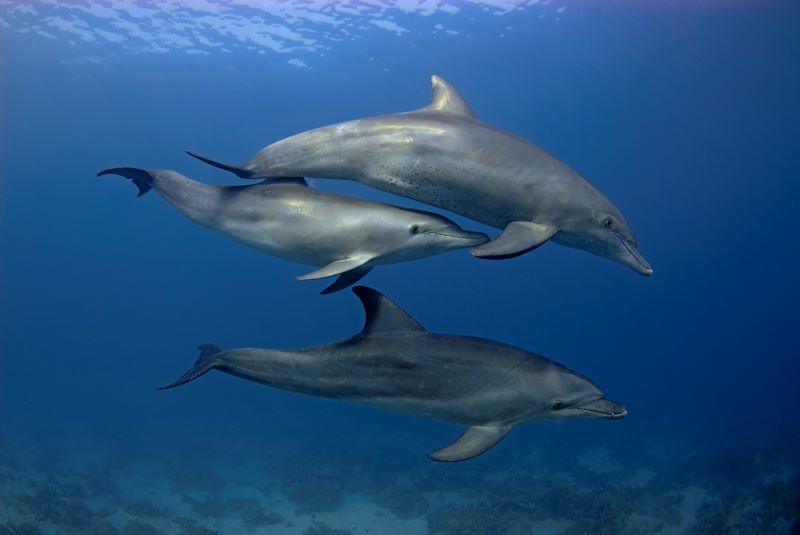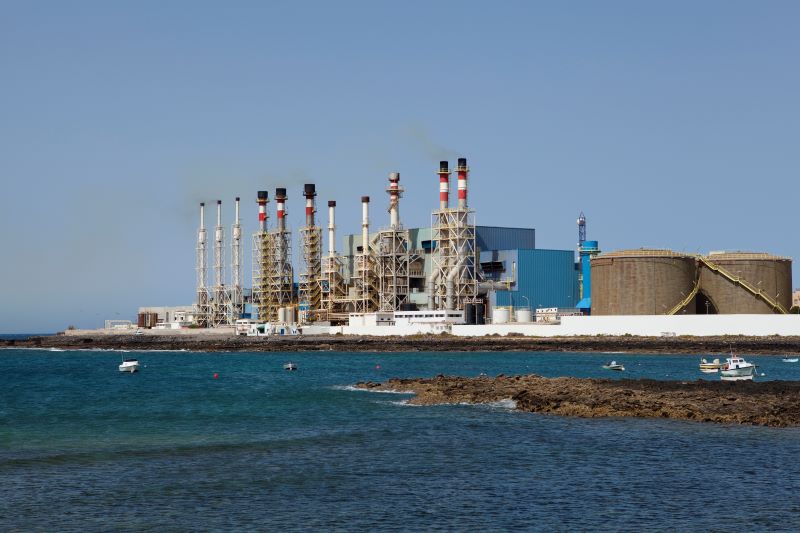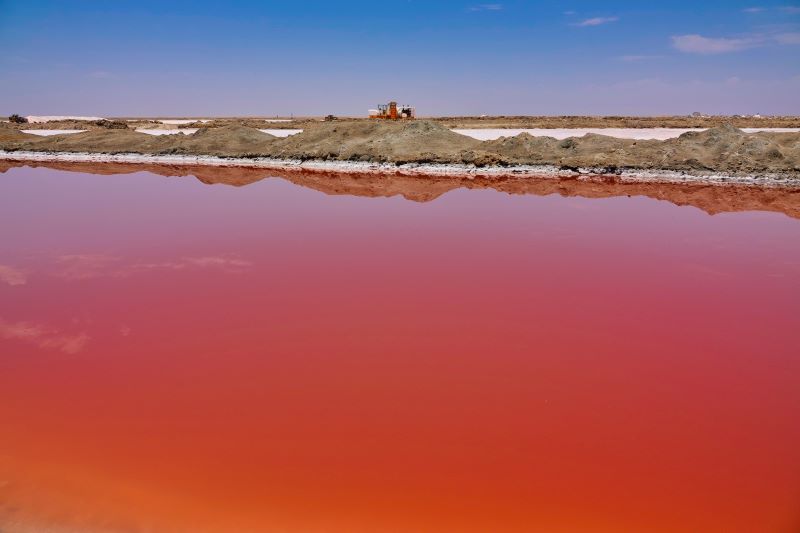Facts About Saltwater
Posted by Joel Pelina on Aug 4th 2022
Over 70% of the planet is covered in water, and yet less than 1% of the Earth’s total water supply consists of available freshwater – that is, freshwater in rivers, lakes, or underground aquifers. This means that humankind has less than 1% of the world’s water supply available to safely drink. The fact is, roughly 97% of the world’s water is in the form of salt-laden seawater. And human bodies require both water and salts to function properly. So why, exactly, can’t we use this vast resource?
Seawater Compared to Freshwater
- Seawater, the water that makes up the oceans and seas of the world, generally consists of 95-96.5% water, 2.5-3.5% salts, and the rest a mixture of minerals, inorganic compounds, and organic compounds.
- The salinity – the concentration of dissolved salts – in seawater can often reach 35 (measured in ppt, or parts per thousand). In comparison, freshwater salinity generally measures at less than 1 (freshwater from rivers typically has a salinity of 0.5).
Why Humans Can’t Drink Seawater
- Human kidneys can filter out impurities and waste in the blood, creating urine to be expelled. But the kidneys can only create urine that has less salinity than the bloodstream.
- Human blood salinity is generally measured at 9. This means that seawater, with a salinity of 35, has almost four times the salinity of blood – a vastly higher salt concentration than human kidneys can handle.
- If a human drinks seawater, the kidneys cannot properly filter out the massive influx of salts into the bloodstream, leading to a tremendous increase in blood salinity.
- The cells of the human body require salt to maintain proper chemical balances and reactions; cells help regulate salinity through cellular osmosis. When the surrounding bloodstream is too salty, fluid moves from the cells into the bloodstream to reduce its salinity; when the bloodstream does not have enough salt, fluid moves from the bloodstream into cells to increase its salinity.
- The body’s cells will react to the high salinity of the blood by losing water from within the cells to the bloodstream to reach a better balance of water and salts. The kidneys will then create more and more urine to expel the salts, causing water to leave the body in the process.
- As this continues, the body will attempt to compensate for the fluid loss by constricting blood vessels and increasing heart rate to maintain the flow of blood to vital organs. This can cause feelings of nausea, weakness, and even delirium.
- If this process continues long enough, and more water is lost from the body, dehydration can eventually lead to organ failure, coma, and death.
- Because of the way the human body reacts to the high salinity of seawater, drinking seawater will never quench your thirst, because it only serves to dehydrate the body.
- Poet Samuel Taylor Coleridge remarked upon the deadly inability to drink seawater in his “The Rime of the Ancient Mariner” when he wrote the famous line, “Water, water, everywhere, nor any drop to drink.”
Some Animals Can Drink Seawater

- Certain animals can drink seawater because they have specific organs and body functions that work to purge the excess salt from the water.
- Whales, dolphins, and seals have additional cellular structures and enzymes that can act as “super-kidneys” to remove excess salt from their bodies.
- Albatrosses, gulls, and penguins have salt glands and bill structures that can filter out excess salt from the water.
What About Desalination?

- Desalination is the process of removing salts, minerals, and contaminants from seawater or other water sources to make the water safe for human consumption.
- There are currently three main methods to desalinate water: thermal, electrical, and pressure desalination.
- Thermal distillation, or distillation, involves boiling saltwater, then cooling the water vaper in a separate container to return it to liquid water, leaving any salts or other particulates behind.
- Electrical desalination uses an electrical current to separate the salts from the water as it passes through a membrane.
- Pressure desalination, or reverse osmosis, uses pressure to force saltwater through a selectively permeable membrane, separating the salts from the water as it passes through the membrane.
Is Desalination Effective?

- While desalination can be effective at producing potable water, the problem is the cost involved to do so.
- Distillation requires a great deal of energy to heat up and cool the water – too much energy to be feasible for many companies and nations. It is commonly used in countries in the Middle East, where oil energy and income is abundant, but potable water sources are not.
- Electrical desalination is effective with lower salinity saltwater such as brackish water, estuaries (where rivers meet the sea), or underground aquifers, but requires too much energy to be practical for use with seawater.
- Reverse osmosis is similar to electrical desalination in that it is only practical with saltwater at lower salinity or smaller volumes of water, but requires too much energy to be feasible for use with seawater.
- Generally, desalination costs two to three times more than traditional water sources. Furthermore, large desalination plants can cost hundreds of millions of dollars to build and operate, making them too costly except for water-scarce regions that are also power- or money-rich.
- Aside from the high financial and energy costs, desalination also incurs environmental costs, as the waste product of desalination is a hyper-salinated brine that is damaging to whatever environment it is disposed in.
- This waste brine – water with a salinity higher than 50 – is most commonly pumped back into the ocean by desalination plants, causing damage to the plant life and animals in the area.
- With current methods available, desalination is an inefficient process: only 4 gallons of fresh water are produced from every 10 gallons of saltwater processed. The other 6 gallons of water ends up as wastewater/brine.
Ultimately, until the desalination process becomes more efficient and more cost-effective, it will remain a method of drinking water production limited to very specific regions, such as the arid Middle East. Until then, potable water will continue to be provided through rivers, lakes, streams, and underwater aquifers. The issue, then, returns to the safety and healthfulness of the sources of freshwater, and the ability of municipal water treatment plants to adequately treat the water for contaminants. With a Multipure water filter, you can help ensure that the water in your home is cleaner, safer, and healthier for yourself and your family.
Resources
- “Can humans drink seawater?” NOAA. Last updated February 26, 2021. https://oceanservice.noaa.gov/facts/drinksw.html
- Duxbury, Alyn. “seawater.” Britannica. Last updated April 28, 2022. https://www.britannica.com/science/seawater
- Giuggio, Vicky. “What If You Drink Saltwater?” HowStuffWorks. August 23, 2019. https://science.howstuffworks.com/science-vs-myth/what-if/what-if-you-drink-saltwater.htm
- Gleick, Peter. “Why don't we get our drinking water from the ocean by taking the salt out of seawater?” Scientific American. July 23, 2008. https://www.scientificamerican.com/article/why-dont-we-get-our-drinking-water-from-the-ocean/
- Loeffler, John. “Why can’t we drink saltwater?” Live Science. June 27, 2022. https://www.livescience.com/32454-why-cant-we-drink-saltwater.html
- McFadden, Christopher. “Will Turning Seawater Into Drinking Water Help Water Shortages?” Interesting Engineering. September 16, 2020. https://interestingengineering.com/science/will-turning-seawater-into-drinking-water-help-water-shortages
- Mock, Jillian. “Why Desalinating Water is Hard — and Why We Might Need To Anyway.” Discover. November 1, 2019. https://www.discovermagazine.com/environment/why-desalinating-water-is-hard-and-why-we-might-need-to-anyway
- Walton, Brett. “Desalination Has a Waste Problem.” Circle of Blue. Last accessed August 3, 2022. https://www.circleofblue.org/2019/world/desalination-has-a-waste-problem/
- Water Science School. “Saline Water and Salinity.” USGS. June 11, 2018. https://www.usgs.gov/special-topics/water-science-school/science/saline-water-and-salinity

